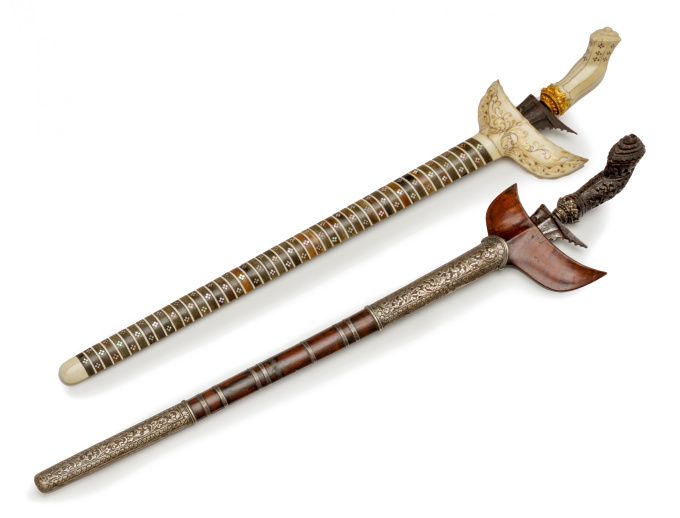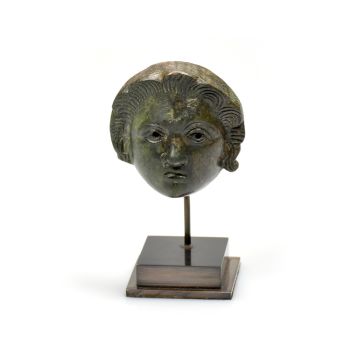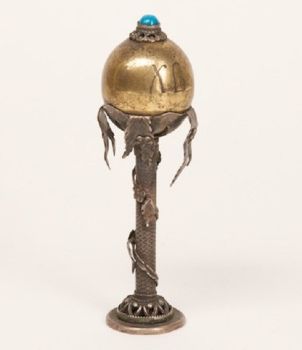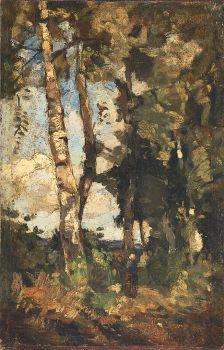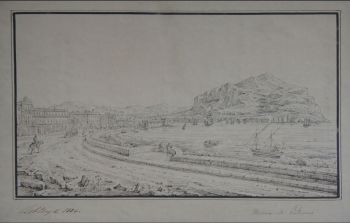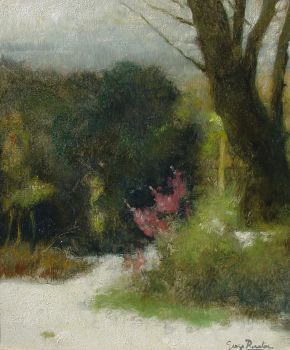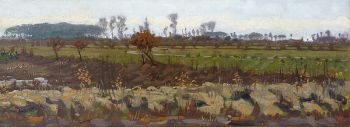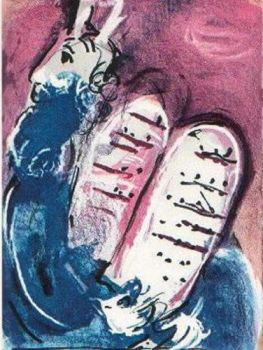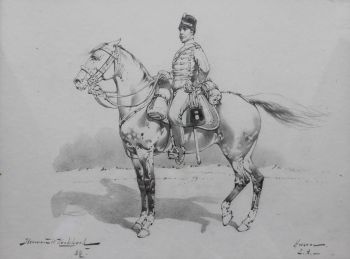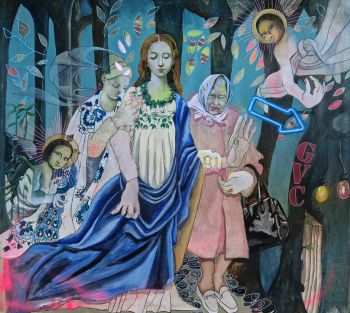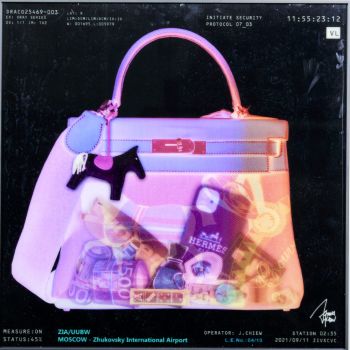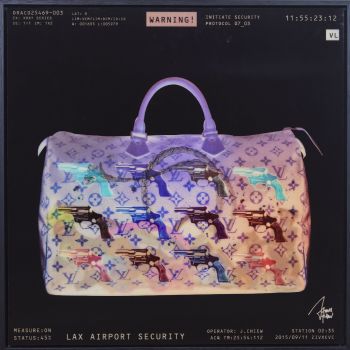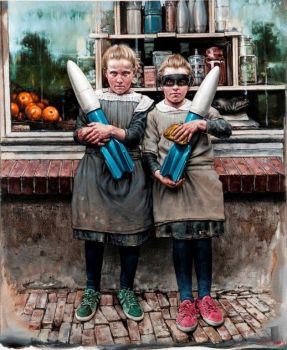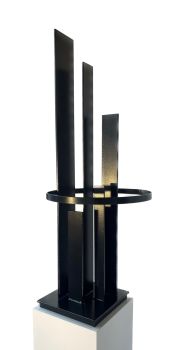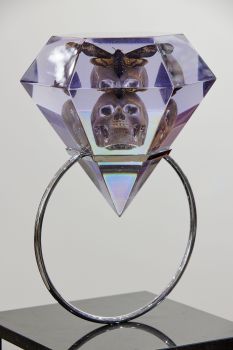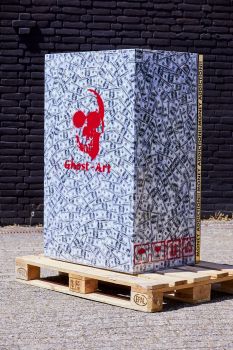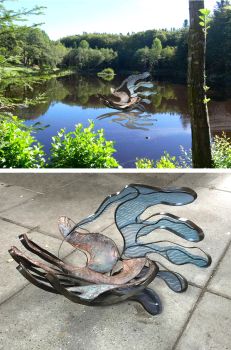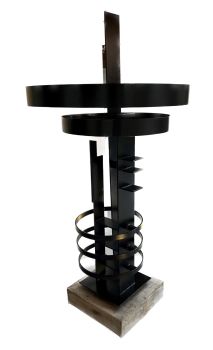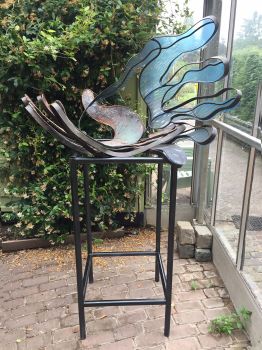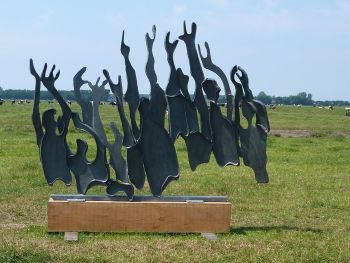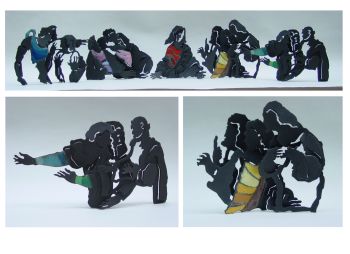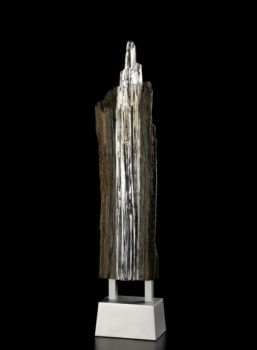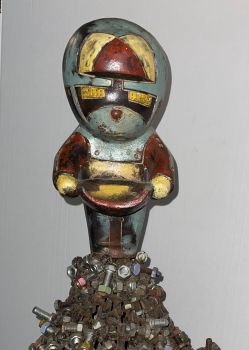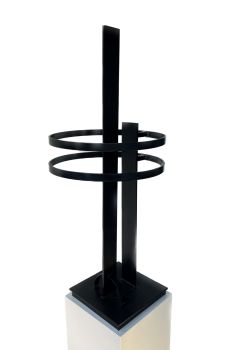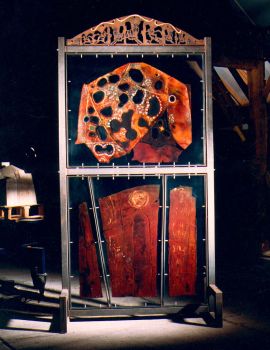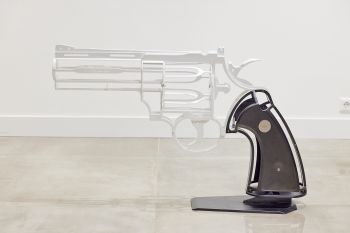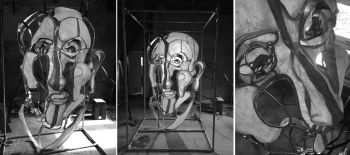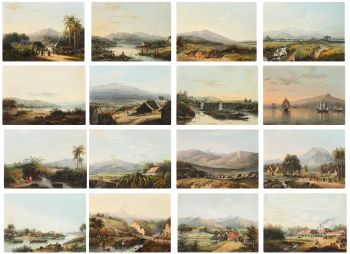KERIS PANJANG, 'LONG KERIS' OR 'EXECUTION KERIS' 19th century
Unknown artist
BoneSteelIvoryMetalPearl
60 cm
Currently unavailable via Gallerease
Zebregs & Röell - Fine Art - Antiques
- About the artworkA KERIS PANJANG, 'LONG KERIS' OR 'EXECUTION KERIS'
Sumatra, 19th century
Ivory hilt, gold mendak, ivory wrangka inlaid with gold strings, and pendok consisting of variously coloured bands of horn inlaid with mother of pearl.
L. 58.5 cm
Note:
The keris panjang in Sumatra and Malaysia functioned as a status symbol and as a form of regalia for local rulers and sultans, but it also had a utilitarian nature. The long straight narrow double-edged blade is not made of iron but good steel and was traditionally used to execute criminals.
A KERIS PANJANG, 'LONG KERIS' OR 'EXECUTION KERIS'
Sumatra, 19th/20th century
Iron hilt, silver mendak, horn hilt, wrangka and scabbard made of wood the latter with embossed silver with leaf and foliage motifs (daun mrambat, “continuous meandering foliage”) at the top and tip, and in between undecorated silver bands.
L. 60 cm
Note:
The reason why the keris panjang had to be long is that the keris was inserted above the collarbone of the squatting victim and pushed down directly into the heart, causing instant death. This could be done quickly or slowly, according to the sentence. The keris was driven through cotton, wool or other textile so that the blood could be soaked up. Only the ruler was allowed to spill blood directly on the ground. - About the artist
It might happen that an artist or maker is unknown.
Some works are not to be determined by whom it is made or it is made by (a group of) craftsmen. Examples are statues from the Ancient Time, furniture, mirroirs, or signatures that are not clear or readible but as well some works are not signed at all.
As well you can find the following description:
•“Attributed to ….” In their opinion probably a work by the artist, at least in part
•“Studio of ….” or “Workshop of” In their opinion a work executed in the studio or workshop of the artist, possibly under his supervision
•“Circle of ….” In their opinion a work of the period of the artist showing his influence, closely associated with the artist but not necessarily his pupil
•“Style of ….” or “Follower of ….” In their opinion a work executed in the artist’s style but not necessarily by a pupil; may be contemporary or nearly contemporary
•“Manner of ….” In their opinion a work in the style of the artist but of a later date
•“After ….” In their opinion a copy (of any date) of a work of the artist
•“Signed…”, “Dated….” or “Inscribed” In their opinion the work has been signed/dated/inscribed by the artist. The addition of a question mark indicates an element of doubt
•"With signature ….”, “With date ….”, “With inscription….” or “Bears signature/date/inscription” in their opinion the signature/ date/ inscription has been added by someone other than the artist
Are you interested in buying this artwork?
Related artworks
Unknown artist
Silver Russian Presentation Easter Egg1880 - 1899
Price on requestH.W.C. Dullaert Art & Antiques Dealer
1 - 4 / 12- 1 - 4 / 24
Unknown artist
AN IVORY NETSUKE OF A DUTCHMAN FROLICKING WITH A SMALL BOY18th century
Price on requestZebregs & Röell - Fine Art - Antiques
Unknown artist
A IVORY NETSUKE OF A DUTCHMAN HOLDING A COCKEREL18th century
Price on requestZebregs & Röell - Fine Art - Antiques
Unknown artist
A SMALL IVORY NETSUKE OF A DUTCHMAN WITH A DRUM1750 - 1800
Price on requestZebregs & Röell - Fine Art - Antiques
Unknown artist
The Stamford Raffles Secretaires.1800 - 1813
Price on requestZebregs & Röell - Fine Art - Antiques
Unknown artist
A RARE COMPLETE INDIAN SADELI INLAID WORK AND WRITING BOX1800 - 1850
Price on requestZebregs & Röell - Fine Art - Antiques
Unknown artist
A JAPANESE MODEL OF A NORIMONO, A PALANQUIN1650 - 1700
Price on requestZebregs & Röell - Fine Art - Antiques
Unknown artist
A GILT-SILVER SRI LANKAN DOCUMENT SCROLL CONTAINER 19th century
Price on requestZebregs & Röell - Fine Art - Antiques
1 - 4 / 24- 1 - 4 / 9
Unknown artist
A MARINE IVORY NETSUKE OF A DUTCHMAN HOLDING A CHINESE FAN18th century
Price on requestZebregs & Röell - Fine Art - Antiques
Unknown artist
A RARE COMPLETE INDIAN SADELI INLAID WORK AND WRITING BOX1800 - 1850
Price on requestZebregs & Röell - Fine Art - Antiques
Unknown artist
A COLLECTION OF FOUR SRI LANKAN IVORY BIBLE BOXES18th century
Price on requestZebregs & Röell - Fine Art - Antiques
1 - 4 / 24Dutch School
Arrival of a Dutch East Indiaman in the Table Bay18th century
Price on requestZebregs & Röell - Fine Art - Antiques
Unknown artist
A SMALL IVORY NETSUKE OF A DUTCHMAN WITH A DRUM1750 - 1800
Price on requestZebregs & Röell - Fine Art - Antiques
Unknown artist
A silver spoon commemorating Juff’ Margareta van Hoorn1656 - 1694
Price on requestZebregs & Röell - Fine Art - Antiques
Unknown artist
Dutchmen in Miniature18th century
Price on requestZebregs & Röell - Fine Art - Antiques
Unknown artist
A large wall map of Asia by Nicolas de Fer 1647 - 1720
Price on requestZebregs & Röell - Fine Art - Antiques
Abraham Salm
Twenty-four chromolithographs of Java after A. Salm”1801 - 1876
Price on requestZebregs & Röell - Fine Art - Antiques
1 - 4 / 12

